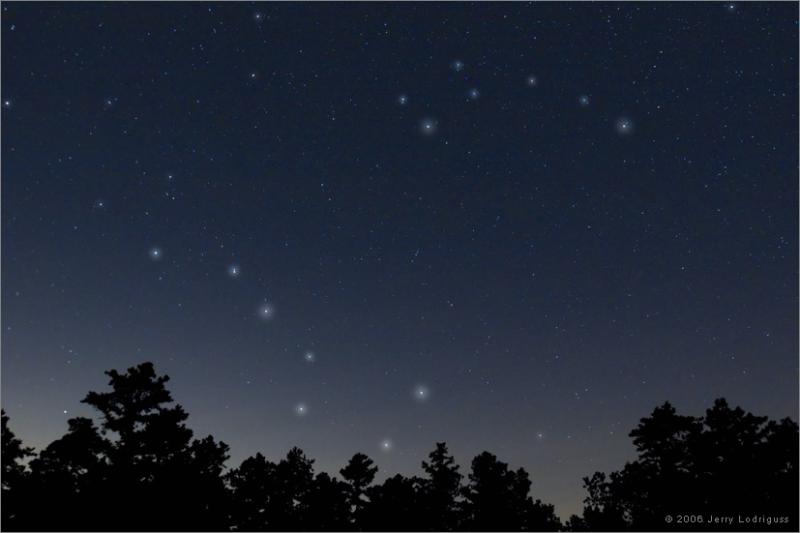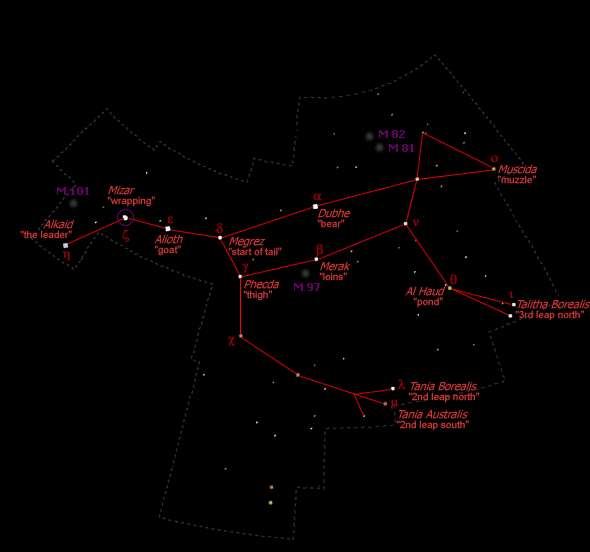can you identify the big an little dippers in the night shot below??

the big dipper is easy to identify right now, even from inside cities. i can usually use the stars at the end of the pan to find polaris as well, but it takes a bit more patience and fewer city lights to spot all the stars of the little dipper.
here's a hint:

note that the orientation of the constellation changes throughout the night and throughout the year. right now in the sky over austin, the big dipper is oriented differently than shown in the image above. it appears upside down early in the evening and rotates counterclockwise around the north star throughout the night... from the top to the left position in the image below.

ursa major translates from latin as the "big bear." it's not obvious to me where the "big bear" imagery comes from when considering the pattern formed by stars that i familiarly identify as the big dipper.
the map below shows the outline of the constellation ursa major. all the stars withing the boundary are considered part of ursa major. the brightest stars that create the shape of the "big bear" are identified and connected with red lines.

here's one that highlights the stars that make up the big dipper.

i've been reading that in england, this asterism is called the "plough." is that correct? that'll be a good thing for me to know ;) some other names i've read about include the butcher's cleaver, the saucepan, and the great wagon, among others.
the stars in ursa major are not all at the same distance from us, ranging in distance from about 70 light-years to about 210 light-years away. since the stars move relative to each other in our sky, the big dipper will not always look as it does now. here's a short history of distorted big dippers from the past and future...

here's why:
enjoy the view of the dippers!











No comments:
Post a Comment